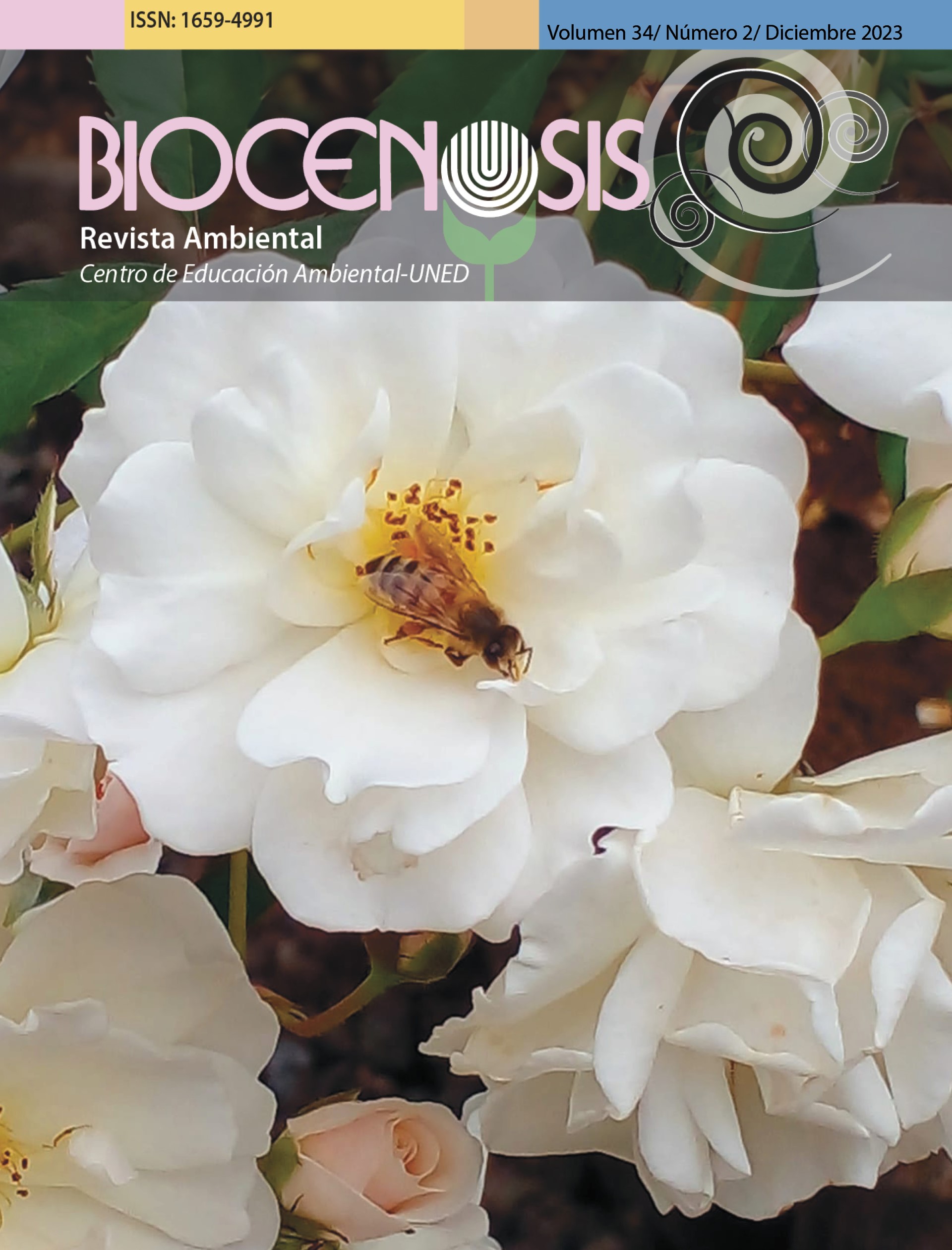¿Existe diferencia entre la diversidad de abejas presentes en ambientes urbanos y rurales? Un estudio en Grecia, Costa Rica
DOI:
https://doi.org/10.22458/rb.v34i2.5075Palabras clave:
biodiversidad, abejas tropicales, urbanización, conservación, Costa RicaResumen
Las abejas desempeñan un papel clave en la supervivencia de muchos organismos, incluidos los humanos. Sin embargo, en los últimos años, sus poblaciones han experimentado un drástico descenso. El avance de la civilización humana ha provocado la migración de muchas abejas a ambientes urbanos donde su adaptación se dificulta, lo cual provoca disminución de su diversidad. Por tanto, es importante conocer el estado de las poblaciones de abejas tanto en ambientes urbanos como rurales para poder protegerlas. El presente estudio analiza la diversidad de abejas diurnas presentes en ambientes urbanos y rurales en Grecia de Alajuela, Costa Rica. Se aplicaron dos métodos de recolección (red entomológica y platos trampa) en cada ubicación y ambiente durante el trimestre de setiembre a noviembre de 2022, lo que resultó en la recolección de un total de 99 individuos que fueron identificados taxonómicamente. Posteriormente, al calcular el índice de biodiversidad de Simpson y el coeficiente de similitud de Jaccard, se concluyó que el ambiente rural presenta una mayor diversidad que el urbano. No obstante, el ambiente urbano contó con más riqueza específica en cuanto a géneros. Se destaca que los platos trampa amarillos no arrojaron resultados positivos. Sin embargo, en futuras investigaciones es necesario analizar las variables que pueden influir significativamente en la toma de datos sobre biodiversidad, tales como el clima, la estacionalidad, los métodos de muestreo y la composición de los entornos bajo estudio.
Publicado
Cómo citar
Número
Sección
Licencia

Esta obra está bajo una licencia internacional Creative Commons Atribución-NoComercial 4.0.
